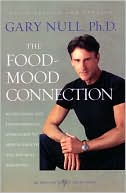Verlyn Klinkenborg - The Folly of Big Agriculture: Why Nature Always Wins
 April 13, 2012
April 13, 2012 In its short, shameless history, big agriculture has had only one big idea: uniformity. The obvious example is corn. The U.S. Department of Agriculture predicts that American farmers — big farmers — will plant 94 million acres of corn this year. That’s the equivalent of planting corn on every inch of Montana. To do that you’d have to make sure that every inch of Montana fell within corn-growing parameters. That would mean leveling the high spots, irrigating the dry spots, draining the wet spots, fertilizing the infertile spots, and so on. Corn is usually grown where the terrain is less rigorous than it is in Montana. But even in Iowa that has meant leveling, irrigating, draining, fertilizing, and, of course, spraying.
You can argue whether uniformity is the result of efficiency or vice versa. But let’s suppose that efficiency is merely the economic expression of uniformity. The point is this: When you see a Midwestern cornfield, you know you’re looking at nature with one idea superimposed upon it. This is far less confusing, less tangled in variation than the nature you find even in the roadside ditches beside a cornfield or in a last scrap of native prairie growing in a graveyard or along an abandoned railroad right-of-way. Nature is puzzling. Corn is stupefying.
Read More:
http://e360.yale.edu/feature/the_folly_of_big_agriculture_why_nature_always_wins/2514/
 Email Article |
Email Article | 



